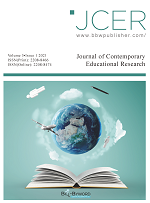Tibetan Folk Songs and Dances in Diebu – The Musical Characteristics of Gerba (Gar Pa)
Abstract
Folk songs and dances originated from people’s sacrificial activities in the struggle against nature in the primitive society. Their origins are related to the ideology and living environment of the people at that period of time. These activities were expressed in the form of primitive songs and dances, and gradually evolved into folk songs and dances. The gar pa song and dance from Diebu, in Gannan region, is a unique song and dance of a Tibetan region on the eastern edge of Qinghai-Tibet Plateau. Its content and form are unique. It still retains the original trinity feature which includes poem, music, and dance. The production of songs and dances contains rich cultural connotations and unique local characteristics. This article elaborates the characteristics of Diebu’s gar pa song and dance in terms of its music and performance form.
References
Yang Minkang. Chinese folk song and dance music [M]. Beijing: People's Music Publishing House, 1996.
Geller. Early Tibetan History and Culture [M]. Beijing: Commercial Printing Museum, 2006.
Li Shenggui. Gannan Tibetan Traditional Music [M]. Lanzhou: Gansu People's Publishing House, 2012.
Compiled by Diebu County Chronicles Compilation Committee: Diebu County Chronicles [M]. Lanzhou: Lanzhou University Press. 1989.
Gao Huifang. Artistic and Aesthetic Features of the Traditional Festival "Dao" and its Festival Dance in Diebu Tibetan Regions [J]. Journal of Tibet University.

